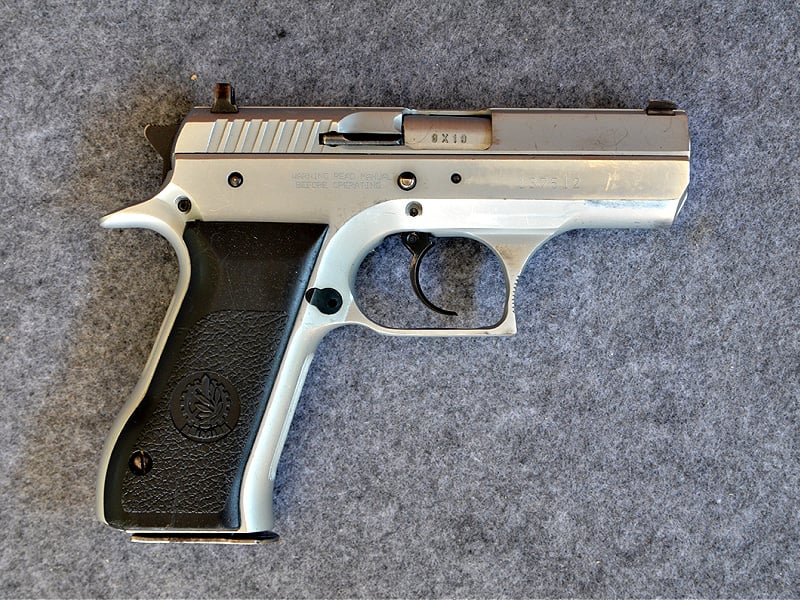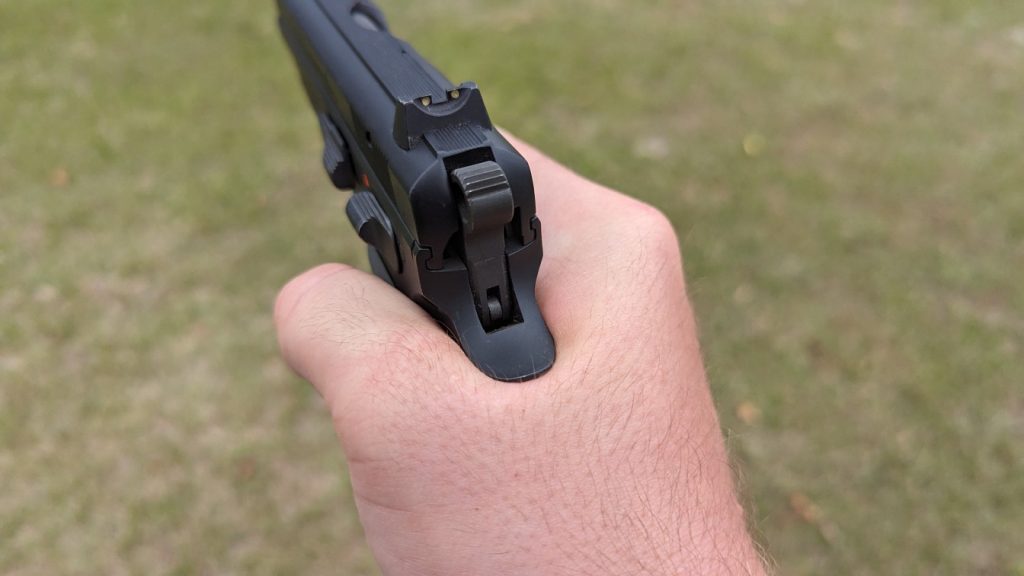If you looked at the current gun industry, you’d be hard-pressed to find a weapon more copied than the Glock Gen 3 series. Everyone is making a Glock Gen 3, from big companies like PSA to Turkish shotgun importers like G-Force. They’re everywhere, but I bet it hasn’t beat the clone status of one of the most legendary pistols ever made: the CZ 75.
Seemingly, everybody has cloned the CZ 75 series. There are American clones, Swedish clones, Turkish clones, North Korean clones, Chinese clones, Italian clones, Israeli clones, and more. Too many to name them all. The CZ 75 has been around forever and made by seemingly everyone with an armament industry. There are plenty of reasons why one would clone the classic CZ 75, and they revolve both around the gun’s performance and its unique history.
History of the CZ 75
The Czech arms industry has always been on the ball. They’ve created a series of legendary firearms and continue to do so. Even when they were locked behind the Iron Curtain, they were creating guns well outside the Warsaw Pact. Guns like the Vz. 58 might look like AKs, but they were mechanically very different.
Right after the Second World War, Josef, and František Koucký — two brothers who worked as engineers at CZUB — were incredibly important to the engineering efforts and, in one way or another, worked and contributed to all the CZUB post-war firearms.

In 1969, František Koucký was given free rein to create a new 9mm Parabellum pistol. This specific pistol was designed to be exported. The military cartridge of choice at the time was the 7.62 TOK, so the 9mm Parabellum would be out of place with production. Out of place, but possibly one of the most important decisions ever made. This outside-the-box thinking ultimately led to the creation of the CZ 75, a cutting-edge and state-of-the-art pistol in 1975.
The pistol utilized a double-stack magazine with a capacity of 16 rounds, and a proven single-action/double-action firing system. The weapon uses the Browning linkless cam locking system with short recoil operation. One of the neat features of the gun was the fact the CZ 75’s slide rides inside the frame rails instead of on top, which lowers the slide and bore axis and helps with recoil a bit.
The Attack of the Clones
The pistol was awesome and on the bleeding edge of this era. While the design was for export, the communists decided to use secret patents and classified the pistol. František Koucký couldn’t file for patent protection abroad, and his amazing gun was seemingly done for. Why they used secret patents isn’t clear. Perhaps they didn’t want the weapon cloned and used by Western military forces.
Well, like they say, three people can keep a secret if two of them are dead. Secret patents meant nothing to the West, and the Italians made the first clones at the Tangfolion factory. From there, the weapon caught like wildfire, and it wasn’t until 1985 that the Czechs were allowed to sell their famed pistol.

By then, the market was full of guns from various companies, and they continued to excel. Numerous world champions wielded CZ-75 pistols from numerous manufacturers. The gun excelled, and while CZ might have missed those initial numbers, they still produced the famed pistol.
In fact, it’s one of the best options for the money, and CZ has turned the 75 series into an entire line of modern pistols for modern needs. From the modern P09 and P07 to the SP-01 and Shadow series, there is a CZ for everything.
Breaking Down the Classic CZ 75
The CZ 75 is a beastly handgun. This particular model is the B model, meaning it has a full-length dust cover. Early ‘pre-B’ and ‘short rail’ models had a shorter dust cover. The Pre-Bs are no longer produced. There are numerous variants of the CZ 75, and this model is the Omega series with a simplified reworked trigger design. These are out of production now but aren’t much different than other CZ 75s.

This big, duty-style pistol is an all-metal wonder nine-style handgun. The gun weighs 2.5 pounds, has a 4.7-inch long barrel, and is 1.28 inches wide. The overall length is 8.12 inches, and it’s 5.4 inches tall. It’s certainly no compact blaster. It’s massive and heavy, but heavy is good. Heavy is reliable!
CZ and František Koucký did this crazy thing where they looked at how a hand works and decided to make a gun’s grip to fit it. This results in an incredibly comfortable grip. Its contours and curves fit the hand perfectly and encourage a nice high grip. A big beavertail extends and greets your hand, allowing you to choke up on the gun comfortably.

The safety is easy to reach with your thumb. It can only be activated when the hammer is to the rear. The slide lock is huge and out of the way for a thumbs-forward grip. I’ve never pinned it down by accident. The magazine release is a quick movement away from the thumb and is easy to press and release. Saying it’s ergonomic is underselling it. It’s a brilliant design and one that gun designers should take a look at. Hint, hint, modern polymer frame guns.
At the Range
When I’m teaching a new shooter how to shoot, we start with a .22LR. When it’s time to move them to something centerfire and larger, the CZ 75 is my go-to. It’s a super smooth shooting gun with excellent ergonomics and an easy shooting design. In terms of recoil reduction, the CZ 75 has a lot going for it.
First, it’s heavy at 2.5 pounds, and that weight cuts recoil. I don’t necessarily believe that the bore axis is that big of a deal with semi-auto pistols.

A few millimeters aren’t a big deal. With that said, the CZ 75’s smaller slide means less mass flies rearward, which creates less overall recoil impulse as well. Plus, it’s in the already tame 9mm. For a new shooter, this creates a pleasant experience.
For an experienced shooter, it lets you go fast. Really fast. It’s so much fun to press that trigger as fast as you can track the sights. Hearing the ding, ding, ding of lead-hitting steel delivers an unbeatable satisfaction. The weapon comes with basic three-dot iron sights that are perfectly adequate for most shooters. All that speed is nothing if the gun can’t shoot straight.
Shooting Straight
Luckily, accuracy won’t be an issue. The longer double-action trigger can be a little challenging, but it’s one of the better double-action trigger designs. It’s heavy and long but smooth. The single-action pull has a little too much take-up, but that’s a personal gripe. The reset is also a little long, but again, you shouldn’t ride the trigger anyway. The single-action pull is mostly short and sweet.

When combined with the long sight radius of the gun, it results in excellent accuracy. Ringing steel at 25 and even 50 yards didn’t prove too much of a challenge. I really want to mill this thing for a red dot. Up close, you could punch the X out of a B-8 target at 10 yards, even under time. Tracking the sights is easy, and the single-action trigger helps with speed and accuracy.

Like most Eastern European designs, it’s as reliable as a hammer. It eats whatever and without argument. The gun is well-proven, and its bugs are well worked out. The 16-round stock magazines are fine, but I stick to the 19-round Mec-Gar options for a little more punch. (And affordability)
The Gun of Steel
The CZ 75 is a beast. It keeps up with most modern guns in many ways. This model does lack the rail and optic mounts of modern guns, but CZ makes a CZ for that with the various incarnations of the gun. The classic CZ 75 is a lot like a 1911 or SIG P210. They are classic guns that are fun to shoot and immensely enjoyable. However, there is nothing saying it is not an adequate defensive firearm if need be. What do you think about Czech perfection?
Let us know below!

